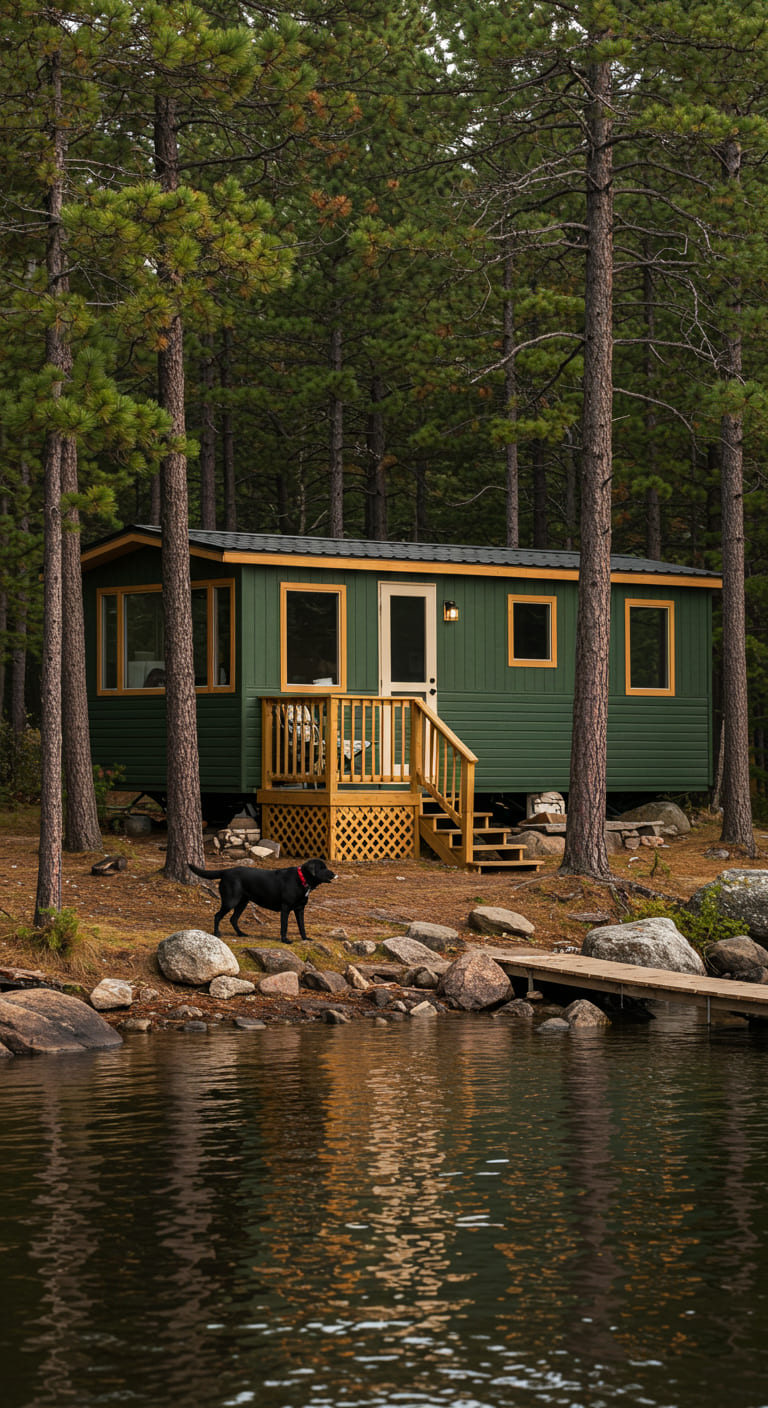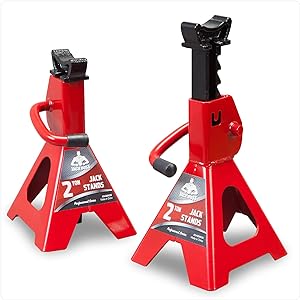As a mobile home owner, I often find myself contemplating the best practices for maintaining the integrity and comfort of my home. One topic that frequently arises in discussions among fellow mobile home enthusiasts is whether mobile home skirting should be vented. This question, while seemingly simple, opens a conversation about the benefits of proper ventilation, the potential risks of neglecting it, and how it can affect the overall health of our homes. In this article, I’ll dive deep into the topic of vented versus unvented skirting, exploring the pros and cons, backed by research and expert opinions. I invite you to join the discussion and share your experiences, as we all strive to create the best living environment possible for ourselves and our families.
Understanding Mobile Home Skirting
Before delving into the specifics of venting, let’s clarify what mobile home skirting is. Skirting is the material that encloses the space between the ground and the base of the mobile home. Its primary functions include:
- Providing insulation.
- Protecting plumbing and electrical systems from pests and weather.
- Enhancing the aesthetic appeal of the home.
- Preventing heat loss during colder months.
Given its importance, it’s crucial to consider how venting can impact these functions. Venting is the process of allowing airflow through the skirting, which can affect temperature and moisture levels beneath the home.
Why Venting Matters
One of the main reasons to consider venting for mobile home skirting is to manage moisture levels effectively. Moisture can lead to a host of problems, including:
- Mold and mildew growth.
- Wood rot in structural components.
- Unpleasant odors.
- Damage to insulation.
Research indicates that proper ventilation can significantly reduce the risk of these issues. According to the U.S. Department of Housing and Urban Development, unvented skirting can trap moisture, leading to a damp environment that promotes mold and deterioration. However, the right amount of ventilation can help maintain a healthy balance of air circulation, thereby reducing humidity levels.
The Benefits of Vented Skirting
Now that we have established the importance of venting, let’s explore the specific benefits that come with opting for vented skirting:
1. Moisture Control
As I mentioned earlier, the primary advantage of vented skirting is its ability to control moisture. By allowing air to flow freely, the risk of condensation forming under the home is greatly reduced, which in turn minimizes the potential for mold and mildew.
2. Improved Air Circulation
Another significant benefit is the enhancement of air circulation. Proper airflow not only regulates temperature but also helps dissipate any odors coming from plumbing or other sources. This is especially beneficial in warmer climates where air stagnation can lead to discomfort.
3. Energy Efficiency
Interestingly, vented skirting can contribute to energy efficiency. By preventing excessive heat buildup during the summer months, your HVAC system won’t have to work as hard to cool your home, which can lead to lower energy bills.
4. Pest Prevention
While it may seem counterintuitive, venting can actually help deter pests. Proper airflow makes it less appealing for rodents and insects to nest in the skirting area since they prefer dark, stagnant environments.
5. Enhanced Longevity of Materials
Finally, vented skirting can extend the lifespan of your mobile home’s materials. When moisture is kept in check, the risk of rot and decay in wood components and insulation decreases, ultimately saving you money on repairs and maintenance.
Potential Drawbacks of Vented Skirting
While I advocate for vented skirting, it’s essential to consider the potential drawbacks as well:
1. Increased Installation Complexity
Vented skirting may require more complicated installation compared to unvented options. Depending on the design, you may need to incorporate specific vent types and placement, which could increase labor costs.
2. Security Concerns
Venting can create access points under your mobile home, which may raise security concerns. Unwanted animals or even intruders could potentially enter through these vents, making it important to choose vent designs that minimize these risks.
3. Maintenance Needs
Vented skirting may require more frequent maintenance to ensure that the vents remain clear and functional. Debris can block airflow, negating the benefits of venting. Regular checks are essential to maintain optimal performance.
Choosing the Right Type of Skirting
As I’ve explored the pros and cons of vented skirting, it’s important to consider the various materials available for skirting. The choice of material can impact both the performance and aesthetics of your mobile home:
- Vinyl: Durable and low-maintenance, vinyl skirting is a popular choice among mobile homeowners. It comes in various colors and styles, allowing for customization.
- Wood: While wood can provide a traditional look, it may require more maintenance to prevent rot and decay, especially in damp conditions.
- Aluminum: Lightweight and resistant to rust, aluminum skirting is another durable option. However, it can be prone to denting.
- Concrete blocks: An excellent choice for insulation, concrete blocks can provide a robust foundation. However, they may be less aesthetically pleasing without proper finishing.
Case Studies: Success Stories with Vented Skirting
To illustrate the benefits of vented skirting, I want to share a couple of success stories that highlight real-world applications:
Case Study 1: The Johnson Family
The Johnsons live in a humid climate where moisture issues are common. After experiencing mold growth under their mobile home, they decided to install vented skirting. Within weeks, they noticed a significant reduction in humidity levels beneath the home. As a result, they reported improved air quality and decreased energy bills.
Case Study 2: The Smiths’ Renovation
When the Smiths purchased their mobile home, they found that the unvented skirting was causing several issues, including unpleasant odors and drafts. After replacing it with vented skirting, they were delighted to find that the airflow improved their home’s comfort. They also reported a decrease in pest sightings, thanks to the increased ventilation.
DIY or Professional Installation?
One question I often hear is whether homeowners should tackle skirting installation as a DIY project or hire a professional. Here are some factors to consider:
DIY Installation
- Cost Savings: DIY can significantly reduce labor costs.
- Personal Satisfaction: Completing the project yourself can provide a sense of accomplishment.
- Time-Consuming: DIY installations can take longer, especially if you’re unfamiliar with the process.
Professional Installation
- Expertise: Professionals have experience and can ensure proper installation, reducing the likelihood of issues down the line.
- Warranty: Many professional installations come with a warranty, providing peace of mind.
- Higher Costs: Hiring a professional will increase your overall project expenses.
Frequently Asked Questions
1. How often should I check my skirting vents?
I recommend checking your vents at least twice a year, particularly before the winter and summer seasons. Remove any debris to ensure proper airflow.
2. What are the signs that my skirting is not properly vented?
Signs include high humidity levels, mold growth, unpleasant odors, and increased pest activity. If you notice any of these issues, it may be time to evaluate your skirting system.
3. Can I convert unvented skirting to vented later on?
Yes, it is possible to convert unvented skirting to vented skirting. However, it may require additional work, such as removing the existing skirting and installing vented panels.
4. Is there a specific type of vent I should use?
There are several types of vents available, including static and adjustable vents. The best choice depends on your climate and specific needs. Consult with a professional if you’re unsure.
Conclusion
In conclusion, the question of whether mobile home skirting should be vented is not merely a matter of personal preference; it can significantly impact the health and longevity of your home. Through my exploration of the benefits and potential drawbacks of vented skirting, I hope you’ve gained valuable insights that can help you make an informed decision. As I continue to learn from my experiences and those of others in the mobile home community, I invite you to share your thoughts and stories. Let’s keep the conversation going! For more tips and tricks on mobile home maintenance, sign up for our newsletter and share this article with friends and on social media!
Jack Boss Jack Stands Low Profile 2 Ton(4000 LBs) Lifting Car Stand, Fit Use for Cars Automotive Small Vehicles, 2 Pack
$29.99 (as of October 10, 2025 07:02 GMT -03:00 - More infoProduct prices and availability are accurate as of the date/time indicated and are subject to change. Any price and availability information displayed on [relevant Amazon Site(s), as applicable] at the time of purchase will apply to the purchase of this product.)
Sign up for our newsletter and stay up to date with exclusive news
that can transform your routine!





